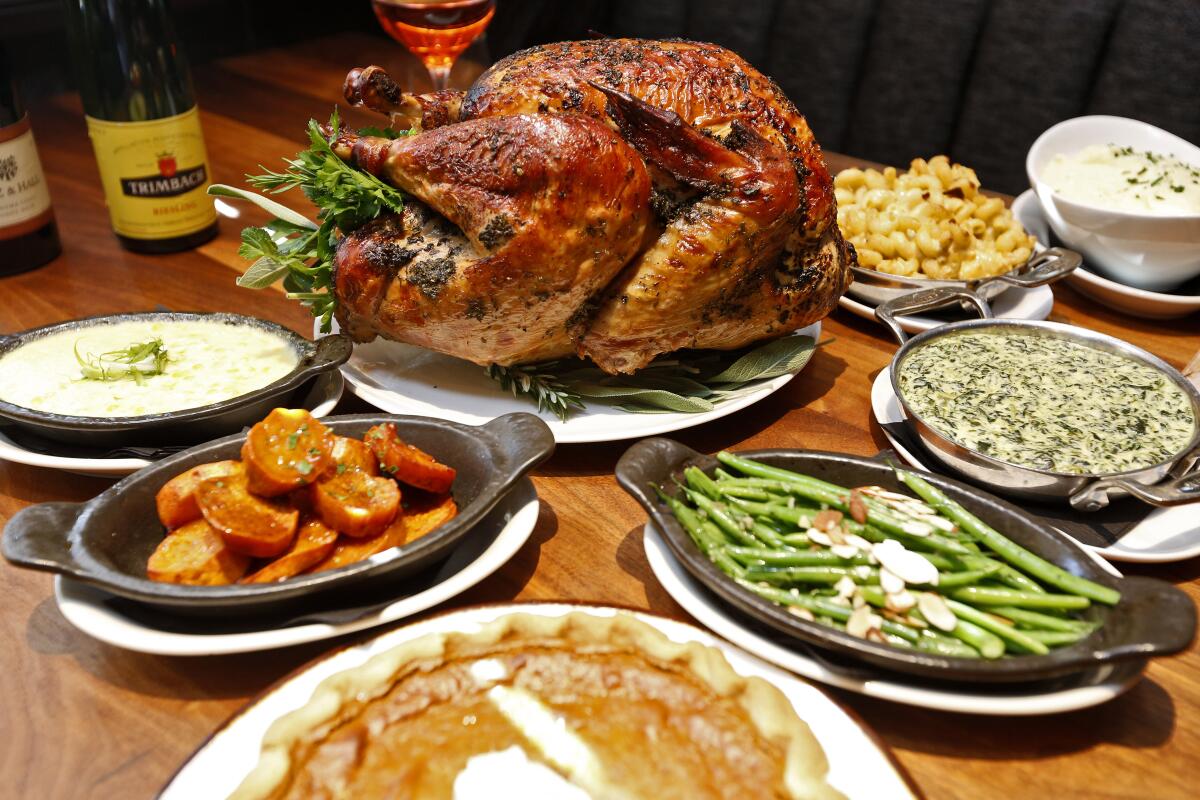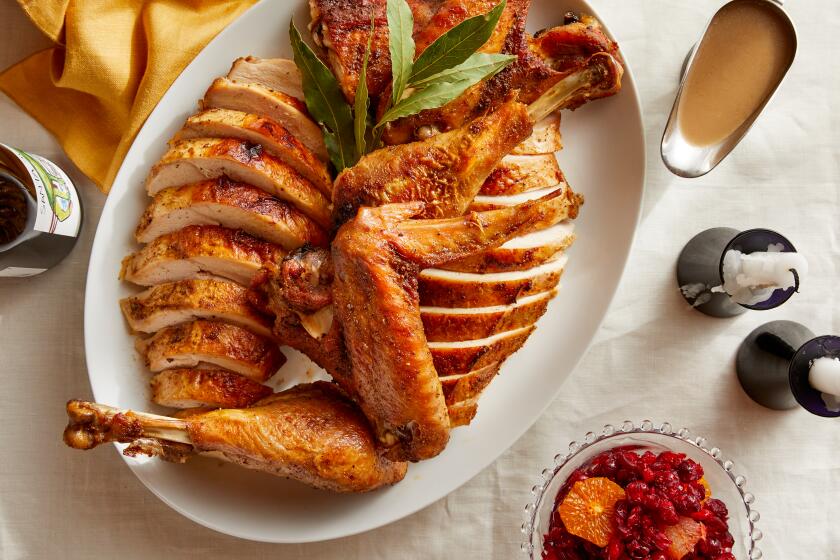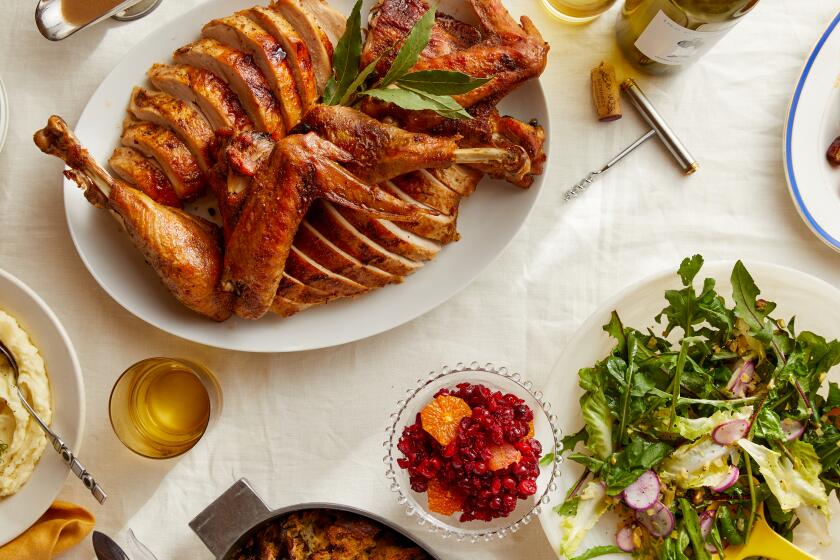Op-Ed: A teacher talks turkey dinner. Her 3rd-graders can’t believe what they are hearing

- Share via
The teachers’ lounge was the great confessional, a place where we’d decompress. Sharing our daily struggles helped us maintain our sanity. As did the laughter that often ensued. One day, a new third-grade teacher shared her day’s lesson, begun in earnest. And then it went off the rails. We’d all been there before.
Every so often when teaching kids, that horrible moment comes. An all-encompassing overpowering silence reigns. Eyes are wide, students hyper attentive. There is little to no talking or movement. Perhaps at best a whisper here or there just beyond the reach of the teacher’s ear. Something has gone very wrong, and it must be discovered with caution and then delicately unwound — preferably without the teacher’s name and lovely mug displayed on the evening news.
The teacher was trying to give her third-grade Latino students at our Central California school a deeper understanding of Thanksgiving. The class was composed of “newcomers,” children who have just arrived in the U.S. They were mostly Spanish speakers. A few were from Indigenous tribes in Mexico, and their primary languages were Nahuatl, Mixtec and Maya.
How to bring together our simplest recipes for an easy, elegant and sumptuous Thanksgiving meal.
Most of the third-graders spoke at least rudimentary Spanish. Nearly all had limited English at best.
“On Thanksgiving we eat a meal,” the teacher informed them in her best Spanish, “with our family and close friends.”
That was fine. The kids got that. They smiled.
“We usually eat cranberries,” All this in her best Spanish. Then she tried a smattering of English, “and mashed potatoes.”
A timid hand was slowly raised, accompanied with a frown of confusion. In Spanglish, the student asked: “Maestra” — teacher — “que es the smashed potato?”
The teacher rewarded the child with praise in Spanish. “Meztli” — Moon — “you make me happy. You are using English and Spanish.” Meztli was at home in Nahuatl. Spanish was a big step for her. The teacher added, “Thank you.”
Meztli smiled over having given the teacher a prize.
In English, the teacher calmly corrected, “Mashed potatoes. Not smashed potatoes.” And then she tried her best to explain the difference between “mashed” and “smashed” in English and Spanish.
“We also eat a bird,” she said.
“Pollita?” a child sheepishly offered in slow, guarded Spanish. Chicken.
Fresh and vibrant Thanksgiving recipes from cookbook author and recipe developer Andy Baraghani.
“No, a turkey,” the teacher replied in Spanish. Backs stiffened. Eyes popped out. The class was aghast. The feared moment had arrived. The teacher couldn’t miss it. What just happened? She tried to dig her way out with more details.
In Spanish she quickly said, “We buy the turkey in the store. The feathers are gone, and we cook it.”
This did not help.
In Spanish, a child sought clarification. “Teacher, the bird who lives in the tree?”
“Yes, they can fly in trees,” she said.
The same child asked, “Teacher, the bird who can turn his head all around, and he goes WHO, WHO, WHO?”
And then the teacher got it. Bingo! Oh, no. I’m not helping them at all.
“Kids, I made a mistake in Spanish. Sorry. I said tecolote. I meant to say guajolote. We do NOT eat owls for Thanksgiving.”
The students didn’t laugh but relief defogged the class. Tension was released in backs. Disbelief disappeared.
It was good to know that owls were not the centerpiece of an American holiday meal.
Paul Karrer is a writer in Monterey. He taught fifth grade in Castroville for 27 years and is the host of the podcast “Karrer Shorts.”
More to Read
A cure for the common opinion
Get thought-provoking perspectives with our weekly newsletter.
You may occasionally receive promotional content from the Los Angeles Times.












